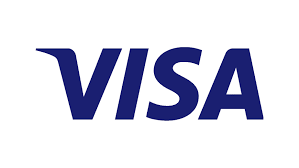Your cart is currently empty!
Visa Stocks: The History, Services, and Global Impact of a Payment

Visa Inc. is one of the most recognizable names in the financial world. With a market capitalization of approximately $500 billion, Visa is more than just a credit card brand—it is a foundational pillar of global commerce. Originally introduced as Bank American card in 1958, the company rebranded to Visa in 1976 and has since evolved into a dominant force in the world of electronic payments.
As a network that facilitates transactions for billions of people and millions of businesses, Visa’s influence stretches across continents, economies, and industries. Its stock performance and role in financial technology make it a key player for both institutional and retail investors.
The Origin of Visa: From BankAmericard to Global Brand
Visa began its journey in 1958 as BankAmericard, a product of Bank of America aimed at simplifying credit-based consumer transactions. At the time, it was a revolutionary concept—an open-loop credit system where multiple banks could issue cards and accept payments using a shared network. By 1976, the brand had outgrown its original identity and was rebranded as Visa.
The name was chosen to reflect its global ambitions—easy to pronounce in many languages and symbolizing universal acceptance. Since then, Visa has grown from a U.S.-centric financial tool to an international standard in electronic payments.
Visa’s Role in Electronic Payments
Visa does not issue credit or debit cards itself, nor does it extend credit or collect payments. Instead, it provides the payment infrastructure that enables secure, real-time transactions between consumers, merchants, banks, and financial institutions. This business model is known as a four-party system, involving the cardholder, merchant, issuer (bank), and acquirer (merchant’s bank). Visa earns revenue through service fees, data processing fees, international transaction fees, and value-added services. As digital payments become more common, Visa continues to benefit from the increasing volume and value of global transactions.
Product Offerings: Credit, Debit, and Prepaid
Visa supports a wide array of products tailored to different financial needs. Its credit cards are issued by partner banks and offer consumers access to revolving credit with secure payment capability. Debit cards link directly to bank accounts, enabling users to make purchases without borrowing. Prepaid cards serve unbanked populations and can be used for travel, gift cards, or business disbursements. Visa’s consistent innovation across these categories ensures accessibility and financial inclusion. Each transaction, whether for a dollar or a thousand, travels through Visa’s secure and scalable infrastructure.
Global Expansion and Market Reach
Visa operates in over 200 countries and territories, connecting more than 80 million merchants with cardholders worldwide. Its expansion into emerging markets has been critical to maintaining transaction growth and financial inclusion. By building partnerships with governments, fintech startups, and local banks, Visa ensures that even the most remote corners of the world have access to secure, digital payment solutions. With mobile payments, QR code technology, and contactless cards, Visa remains at the forefront of transforming how the world spends and transacts.
Technology and Security at the Core
One of the key drivers of Visa’s sustained growth is its investment in technology and cybersecurity. The VisaNet platform can process over 65,000 transaction messages per second with reliability and security. The company employs machine learning, tokenization, and biometric verification to reduce fraud and enhance the user experience. With cyber threats evolving rapidly, Visa continues to deploy artificial intelligence and blockchain-based systems to ensure the integrity of its network. These capabilities not only protect consumers but also strengthen trust in digital payments across the global economy.
Strategic Partnerships and Fintech Integration
Visa’s adaptability in the face of fintech disruption is one of its most powerful advantages. Rather than resisting change, Visa actively partners with fintech firms, mobile wallets, neobanks, and cryptocurrency platforms. Its collaboration with Apple Pay, Google Pay, PayPal, and Square has helped it maintain relevance among younger, tech-savvy consumers. Visa also provides APIs and developer tools to support startups in integrating payment solutions within their platforms. Through these partnerships, Visa ensures its network remains central to the digital commerce ecosystem, regardless of how money changes form.
Revenue Streams and Financial Strength
Visa generates revenue from the volume of transactions processed through its network. It benefits from global economic activity, consumer spending trends, and the shift from cash to card. Its diversified revenue model includes service fees, data processing, cross-border transaction charges, and licensing agreements. The company’s strong profit margins and recurring cash flow make it one of the most stable financial stocks on the market. As consumer behavior shifts toward e-commerce, contactless payments, and digital wallets, Visa’s business model becomes even more attractive to long-term investors.
Visa Stock Performance and Market Perception
Over the past decade, Visa stock has consistently outperformed many benchmarks. Investors see it as a safe, growth-oriented stock with strong fundamentals and low volatility. It is often considered a core holding for portfolios seeking exposure to both the finance and technology sectors. Visa’s commitment to returning value through share buybacks and dividends further strengthens its appeal. With consistent earnings growth, global diversification, and innovation at its core, Visa remains a top pick for those investing in the future of money movement.
Leadership and Vision
Led by a seasoned executive team, Visa has managed to remain agile despite its scale. Its leadership emphasizes operational excellence, customer-centric innovation, and long-term strategy. The company continues to explore emerging technologies like AI-powered fraud prevention, blockchain payments, and central bank digital currency integration. With a clear focus on expanding financial access and simplifying commerce, Visa’s leadership vision is one of both responsibility and future readiness.
Final Thoughts on Visa Stocks and Future Potential
Visa’s legacy is not just in enabling transactions—it’s in enabling trust. Every swipe, tap, or click through the Visa network represents a commitment to speed, security, and simplicity. As the global economy becomes increasingly digitized, Visa stands as a stable, scalable, and forward-looking force. From its roots as BankAmericard to its current status as a global fintech leader, Visa has not only evolved with the times—it has led the way. For investors, Visa stocks offer an opportunity to participate in the ongoing revolution of global commerce.

Mr. Rajeev Prakash
Rajeev is a well-known astrologer based in central India who has a deep understanding of both personal and mundane astrology. His team has been closely monitoring the movements of various global financial markets, including equities, precious metals, currency pairs, yields, and treasury bonds.
Featured Post
Financial Astrology Terminal
The Financial Astrology Terminal is a web platform that combines real-time U.S. market data (S&P 500, Nasdaq, Dow, Russell, key stocks and commodities like gold and silver) with planetary cycles, giving traders and investors astro-timing signals on top of normal charts and analysis.
